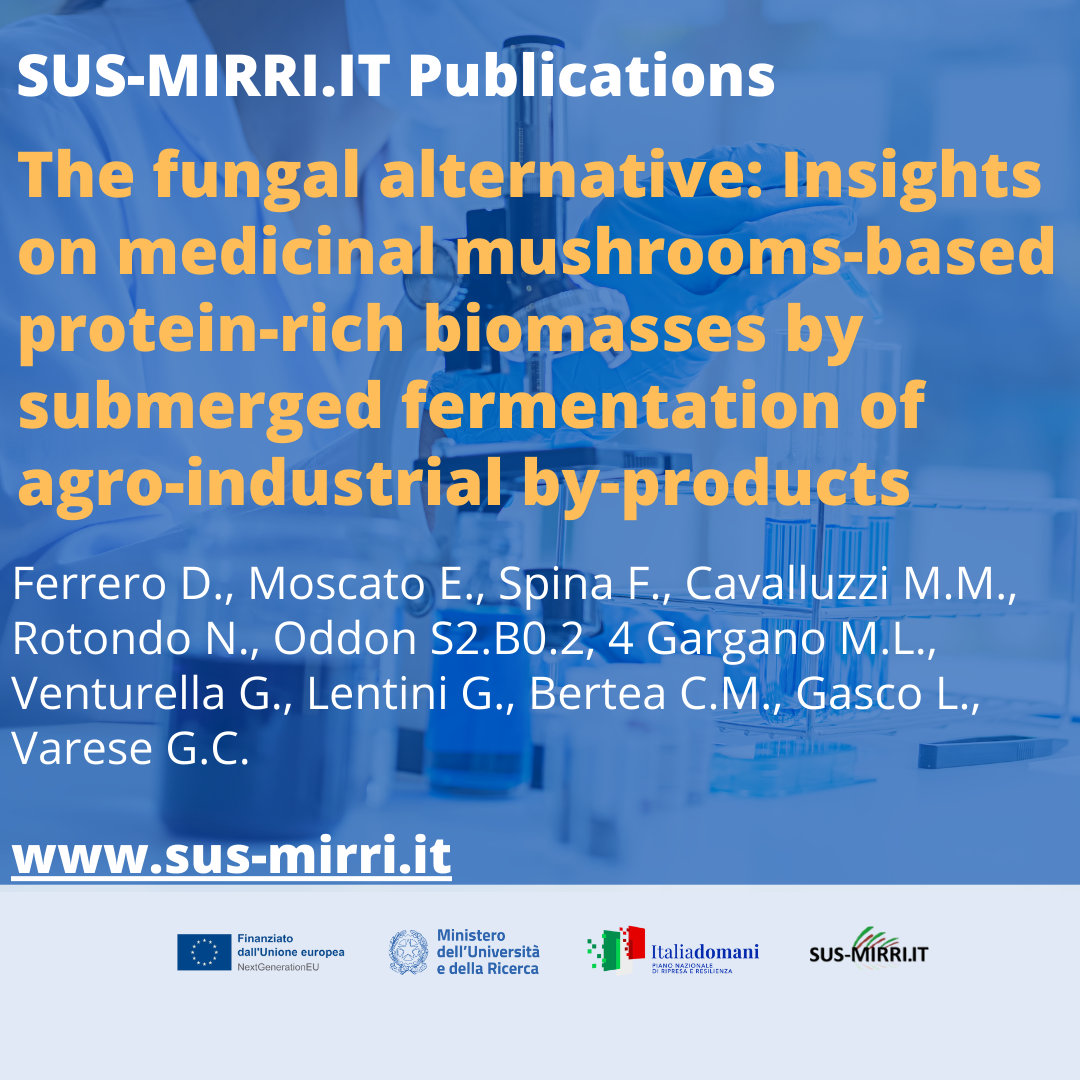Ferrero D., Moscato E., Spina F., Cavalluzzi M.M., Rotondo N., Oddon S2.B0.2, 4 Gargano M.L., Venturella G., Lentini G., Bertea C.M., Gasco L., Varese G.C. 2024 The fungal alternative: Insights on medicinal mushrooms-based protein-rich biomasses by submerged fermentation of agro-industrial by-products -Innovative Food Science & Emerging Technologies, 95, 103721 https://doi.org/10.1016/j.ifset.2024.103721
Abstract
Among the alternative proteins aimed at replacing those of animal origin, fungal proteins stand out as a promising resource capable of meeting environmental, health, and ethical demands. Fungal biomasses, or mycoproteins, are indeed rich in proteins and other macro- and micronutrients, while low in fats. However, their production is an ongoing challenge. This study focused on submerged fermentation, a highly controllable process that can couple high yields and agro-industrial by-products exploitation as growth media.
Five medicinal mushrooms (Ganoderma resinaceum, Pleurotus ostreatus, Cordyceps militaris, Pleurotus eryngii, and Lentinula edodes) were tested for their biomass growth, protein content, and antioxidant properties on several agro-industrial by-product-based media. Among the experimental lines, the highest biomass production and protein content (51%) were achieved in P. eryngii grown in black solider fly (Hermetia illucens) exuviae-media. Concerning the antioxidant properties, the production of fungal extracts through microwave-assisted maceration was as performing as, if not better than, ethanolic extraction.
Continue reading here: https://www.sciencedirect.com/science/article/pii/S1466856424001607?via%3Dihub



